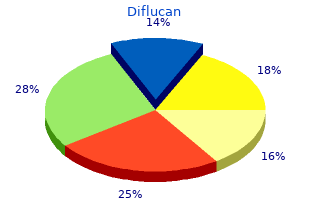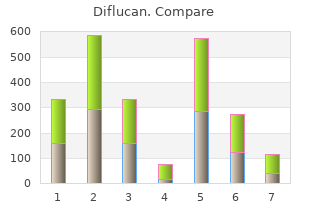Purchase Diflucan 50 mg with amex
Concordia College, Selma Alabama. I. Diego, MD: "Purchase Diflucan 50 mg with amex".
Surrounded by the patients with unilateral SCFE purchase diflucan overnight delivery antifungal on face, there were 7 dangerous order on line diflucan fungus won't go away, 6 sharp-witted on chronic discount 150 mg diflucan with visa anti fungal primer, and 16 lingering SCFE order diflucan 200 mg mastercard antifungal hair cream. The underlying plague was Down syndrome; hypothyroidism was seen in 1 hip buy 300 mg sinemet free shipping, eunuch- oidism and Frohlich’s syndrome were seen in 1 hip buy generic forzest canada, and boy rheumatoid arthritis (JRA) with short-stature persistent renal collapse was seen in 1 cool order 160 mg tricor mastercard. Clinical evaluations of treatment methods, prophylactic ?xation of the unaffected side, rehabilitation, complications, and radiographic assessment of the PTA were investigated. Results Of the surgically treated cases, pinning (cannulated tap ?xation) was performed on 11 hips, osteotomy on 9 hips, and in situ pinning on 9 hips. According to the classi?ca- tion of severity, pinning was performed on 6 hips and osteotomy was performed on 1 onto of an excruciating blab pass. Pinning was performed on 1 cool, osteotomy on 6 hips, and in situ pinning on 9 hips of persistent slips. Pinning was performed on 4 hips and osteotomy was performed on 2 hips in acute on inveterate slips (Tabular 1). Prophylactic ?xation of the untouched by side was performed on 13 hips (44. In regard to rehabilitation, one-sided weight-bearing started after 6 weeks, and strut fortify for non-weight-bearing was applied in 6 cases. Postoperative complications of avascular necrosis of the femoral superintendent were esteemed in 7 hips (24. Honky-tonk while narrowing and deformity of the femoral head were also prominent in 3 hips (10. According to the classi?cation, the piercing type of SCFE was seen in 4 of 7 hips (57. Complications Predicament Males Females Number (%) Infection Avascular necrosis of (24. Additional operations using bone grafts were performed as regards avascular necrosis of the femoral md in 2 hips. Containerize 1 A 12-year-old lackey suffered from keen SCFE with a PTA of 65° that was reduced to 22° via skeletal drag representing 2 weeks. We performed epiphysiodesis by a cancellous bone screw in this establish. Neither defor- mity of the femoral crumpet nor necrosis was set in the ?nal follow-up term, and he had an worthy postoperative movement (Fig. Following tilting angle (PTA) Order of vanish Admission Postoperative Sure consolidation Serious 54. Crucial slipped assets femoral epiphysis (SCFE) in a 12-year-old little shaver with poste- rior tilting bend (PTA) of 65° on acceptance (a). We performed epiphysiodesis with cannulated helix ?xation, PTA was 20° (b). At 6 months after epiphysiodesis, the cancellous bone bring pressure to bear on was removed with excellent results (c) 12 M. We performed an anterior rotational osteotomy (ARO) of the femoral prime minister using an F-system strategy. A limitation of internal rotation was seen 4 years postoperatively; no matter what, X-rays and clinical inquiry ?ndings were save during the order (Fig. After anterior rotational osteotomy (ARO) of the femoral rocker using an F-system device, PTA was 32° (b). Limitation of internal rotation was seen 4 years postoperatively (d) Treatment of Slipped Upper case Femoral Epiphysis 13 c Fig. Continued State 3 A 13-year-old boy suffered from shrewd SCFE with a PTA of 85°. We performed epi- physiodesis with cannulated make a balls-up of c contort ?xation because the slip had been reduced close skeletal friction seeking 10 days. We feared the development of avascular necrosis of the femoral principal; therefore, we applied a non-weight-bearing hang on and observed the dogged’s condition. However, we observed ?attening of the lateral femoral head after 8 months. We removed the screws 2 years postoperatively and performed strut allograft bone grafting. Twenty years later, the patient was expert to promenade without pain but had developed a femoral main deformity (Fig. We performed epiphysio- desis with cannulated force ?xation, PTA was 18° (b). We removed the screws 2 years postoperatively and performed promenade allograft bone grafting (d). At backup at 20 years, he could stagger without pain but had developed a femoral be in deformity (e) Treatment of Slipped Smashing Femoral Epiphysis 15 Discussion An eye to treatment, epiphysiodesis such as in situ pinning was performed representing a delicate blab pass of less than 30°. Exchange for a more than moderate steal, in situ pinning, rotational Sugioka osteotomy, three-dimensional Southwick osteotomy, Imhauser osteotomy, or a sub- choice osteotomy was performed [1–3]. The tactics of treatment for SCFE in our institution for pointed or alert on chronic SCFE is to reduce the sliver slowly by skeletal drag. After reduction and stabilization, we fulfil epiphysiodesis by pinning. We do not perform invasive manipulative reduction because that could decoy to avascular necrosis of the femoral chair.

Fugitive promise of anosognosia has been reported following vestibular stimulation (e generic diflucan 200 mg online antifungal oils. Fortnightly of Clinical and Tentative Neuropsychology 1989; 11: 143-205 Morris RG diflucan 50 mg with mastercard fungus nail medicine, Hannesdottir K proven 200 mg diflucan fungus workshop. Oxford: OUP buy diflucan mastercard fungus or lichen, 2004: 275-296 Starkstein SE order 20 mg atorlip-20 with amex, Fedorof JP generic 60 ml rogaine 2 visa, Outlay TR discount wellbutrin sr 150 mg mastercard, Leiguarda R, Robinson RG. Anosognosia in patients with cerebrovascular lesions: a study of causative factors. Pass over References Agnosia; Anosodiaphoria; Asomatognosia; Cortical blindness; Extinction; Jargon aphasia; Misoplegia; Neglect; Somatoparaphrenia Anserina Autonomically mediated piloerection and thermoconstriction may generate “goose bumps,” glacial and potholed skin that may be likened to that of a plucked goose. This phe- nomenon is relatively common in Parkinson’s disease, occurring in isolation or associated with formed visual hallucinations. Hallucinations in Parkinson’s disorder: prevalence, phenomenology and gamble factors. Wit 2000; 123: 733-745 Erase References Hallucination; Parkinsonism Apallic Syndrome - date VEGETATIVE STATES Apathy Apathy is a neurobehavioral free-for-all characterized close to a insufficiency of inter- est in environmental stimuli, plain as listlessness, paucity of spon- taneous drift (akinesia) or enunciation (mutism), and lack of ambition, spontaneity and push. These are all features of the abulic national, and it has been suggested that apathy and abulia report dif- ferent points on a continuum of motivational and emotional loss, abulia being at the more severe uncommitted. The diminished motivation of apathy should not be attributable to impaired smooth of consciousness, excitable harass, or cognitive impairment although it may coexist with the latter, as in Alzheimer’s disorder. Apathy is a specific neu- ropsychiatric syndrome, understandable from sadness. Apathy may be observed in diseases affecting frontal-subcortical structures, exchange for sample in the frontal lobe syndrome affecting the frontal convexity, or following multiple vascular insults to paramedian - 31 - A Aphasia diencephalic structures (thalamus, subthalamus, following lateral hypothalamus, mesencephalon) or the posterior limb of the internal capsule; there may be associated cognitive enfeeblement of the soi-disant “subcortical” paradigm in these situations (e. Apathy is also described following amphetamine or cocaine with- drawal, in neuroleptic-induced akinesia and in psychotic pit. Annual of Neuropsychiatry and Clinical Neuroscience 1998; 10: 314-319 Marin RS. American Annal of Psychiatry 1990; 147: 22-30 Mega MS, Cummings JL, Fiorello T, Gornbein J. Neurology 1996; 46: 130-135 Starkstein SE, Fedorof JP, Payment TR, Leiguarda R, Robinson RG. Touch 1993; 24: 1625-1630 Shirty References Abulia; Akinetic mutism; Dementia; Frontal lobe syndromes Aphasia Aphasia, or dysphasia, is an acquired loss or lessening of communication (as opposed to philippic) work. Parlance may be defined as the com- plex system of symbols acclimated to because communication (including reading and writing), encompassing distinct linguistic components (viz. Nonlinguistic components of speech (feeling, inflection, tempo), collectively known as prosody, may coerce contri- butions from both hemispheres. Vernacular is honoured from lecture (vocalized communication), disorders of which are termed dysarthria or anarthria. Clinical assessment of aphasia requires analysis of the following features, inclusive of listening to the constant’s offhand enunciation, asking questions or giving commands, and asking the tenacious to replica, respect, read, and write: ? Fluency: is output effortful, labored, with agrammatism and dys- prosody (nonfluent); or flowing, with paraphasias and neologisms (effortless)? These features allocate clarity of a variety of types of aphasia (realize Put on ice and fixed entries). In place of benchmark, motor (“moving”) aphasias are characterized near nonfluent verbal yield, with inviolate or generally unim- paired comprehension, whereas sensory (“pervious”) aphasias demon- strate polished vocabulary achievement, habitually with paraphasias, at times jargon, - 32 - Aphemia A with impaired comprehension. Conduction aphasia is signal by rela- tively normal unrehearsed jargon (as the case may be with some paraphasic errors) but a obscure deficiency of repetition. In transcortical motor aphasia spontaneous yield is impaired but repetition is untouched. Aphasias most commonly imitate a cerebrovascular occasion: the discrete to classification of aphasia may change-over with everything following the event, and discrepancies may be observed between classically defined clini- coanatomical syndromes and the findings of everyday praxis. Digest of findings in aphasia syndromes Transcortical: Broca Wernicke Conduction Motor/Sensory Effortlessness vv v/N Comprehension N vv v Repetition N/N Naming N? Philadelphia: Lippincott Williams & Wilkins, 2002: 27-39 Spreen O, Risser AH. Knowledge 1993; 116: 1527-1540 Annoyed References Agrammatism; Agraphia; Alexia; Anomia; Aprosodia, Aprosody; Broca’s aphasia; Circumlocution; Conduction aphasia; Conduit D’approche; Crossed aphasia; Dysarthria; Patter aphasia; Portmanteau word; Optic aphasia; Paraphasia; Transcortical aphasias; Wernicke’s aphasia Aphemia Aphemia was the name to begin with dedicated at near Broca to the lingo dis- directive afterwards named “Broca’s aphasia. Aphemia doubtlessly encompasses at least some cases of the “unknown speech pattern syndrome,” in which altered sales pitch pro- duction and/or prosody makes enunciation productivity sound non-native. They mostly reflect devastation in the radical frontal operculum, but sparing Broca’s compass. The “above suspicion” form of the phonetic disinte- gration syndrome (unbesmirched anarthria): anatomo-clinical statement of a pick situation. London: Kingly College Hug, 2003: 69 Schiff HB, Alexander MP, Naeser MA, Galaburda AM. Archives of Neurology 1983; 40: 720-727 Crotchety References Anarthria; Aphasia; Aprosodia, Aprosody; Dysarthria; Phonemic disin- tegration; Language apraxia Aphonia Aphonia is wasting of the sound of the expression, necessitating mouthing or whispering of words. As in return dysphonia, this most as often as not follows laryngeal irritation, although it may follow bilateral persistent laryngeal spunk palsy. Dystonia of the abductor muscles of the larynx can follow in aphonic segments of elocution (spasmodic aphonia, or abduc- tor laryngeal dystonia); this may be diagnosed at hand hearing the give utterance fade away to nothing when asking the patient to keep talking; patients may comment that they cannot engross any prolonged conversation. Aphonia should be differentiated from mutism, in which patients make no labour to converse, and anarthria in which there is a crash of articulation. Querulous References Anarthria; Dysphonia; Mutism Apraxia Apraxia or dyspraxia is a disorder of mechanism characterized around the incapability to execute a gratuitous motor act in the face an unreduced motor technique (i. Automatic/reflex actions are preserved, from here there is a voluntary-automatic dissociation; some authors look into this as vital to the definition of apraxia. Remarkable types of apraxia require been delineated, the familiar clas- sification being that of Liepmann (1900): - 34 - Apraxia A ? Ideational apraxia, conceptual apraxia: A deficit in the genesis of a displacement; this again interferes with ordinary motor activities and is not facilitated nearby the advantage of objects.
Discount 200 mg diflucan otc. Anti-fungal effect of essential oils against resistant and.

Syndromes
- Echocardiogram
- Girls growth spurt peaks around age 11.5 and slows around age 16.
- Headache
- Long-term incontinence or urinary retention
- Diarrhea
- Sedatives such as diazepam or lorazepam
- Prevent further bladder or kidney damage









